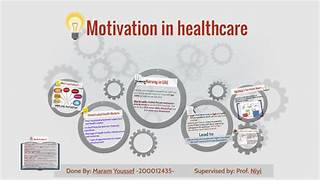Best Strategies for Promoting Customer Motivation in Healthcare Organizations
Introduction
Customer motivation plays a crucial role in the success of healthcare organizations. Engaged and motivated patients are more likely to adhere to treatment plans, maintain regular check-ups, and make informed health decisions. Healthcare providers must implement effective strategies to ensure patient motivation remains high, leading to improved health outcomes and patient satisfaction. This article explores key strategies to enhance customer motivation in healthcare settings.
1. Personalized Care and Patient Engagement
One of the most effective ways to motivate patients is by offering personalized care tailored to their specific needs. Strategies include:
- Customized Treatment Plans: Developing personalized treatment approaches based on medical history and preferences.
- Shared Decision-Making: Involving patients in their healthcare decisions to increase engagement and ownership.
- Patient Education: Providing easy-to-understand information about conditions, treatments, and preventive measures.
2. Utilizing Technology for Enhanced Patient Interaction
Technology has revolutionized patient engagement, making healthcare more accessible and interactive. Some key technological strategies include:
- Telemedicine Services: Offering virtual consultations to increase convenience and accessibility.
- Mobile Health Apps: Providing tools for tracking health progress, setting medication reminders, and scheduling appointments.
- Electronic Health Records (EHRs): Allowing patients to access their medical history and communicate with healthcare providers efficiently.
3. Effective Communication and Relationship Building
Building strong relationships between healthcare providers and patients fosters trust and motivation. Key communication strategies include:
- Active Listening: Understanding patient concerns and addressing them empathetically.
- Regular Follow-Ups: Checking in with patients to track progress and provide encouragement.
- Clear and Concise Information: Avoiding medical jargon and explaining treatment options in simple terms.
4. Incentive Programs for Patient Engagement
Incentives can be powerful motivators for patients to maintain healthy behaviors. Some effective incentive-based strategies include:
- Loyalty Programs: Offering discounts on healthcare services for consistent engagement.
- Wellness Challenges: Encouraging participation in fitness programs or health improvement initiatives.
- Rewards for Preventive Care: Providing incentives for regular check-ups and vaccinations.
5. Creating a Positive and Supportive Environment
A welcoming healthcare environment can significantly impact patient motivation. Strategies for fostering a positive atmosphere include:
- Compassionate Care: Training staff to provide empathetic and patient-centered services.
- Comfortable Facilities: Ensuring waiting areas and patient rooms are clean and inviting.
- Support Groups: Encouraging peer support and group therapy for chronic illness management.
6. Empowering Patients Through Self-Management Programs
Encouraging patients to take charge of their health leads to long-term motivation. Effective self-management strategies include:
- Health Coaching: Providing one-on-one coaching sessions to guide patients toward healthier choices.
- Educational Workshops: Teaching patients about disease management, nutrition, and exercise.
- Behavioral Therapy Support: Assisting patients in making lasting lifestyle changes through counseling and motivation techniques.
7. Fostering Family and Community Support
Family and community involvement can play a significant role in patient motivation. Strategies include:
- Family Counseling Sessions: Engaging family members in the patient’s care process.
- Community Wellness Initiatives: Organizing health fairs, screenings, and public awareness campaigns.
- Peer Support Networks: Connecting patients with others facing similar health challenges.
Conclusion
Promoting customer motivation in healthcare organizations requires a multi-faceted approach, incorporating personalized care, technology, communication, incentives, and support systems. By implementing these strategies, healthcare providers can foster an environment where patients feel valued, engaged, and empowered to take control of their health. As the industry continues to evolve, healthcare organizations must prioritize patient motivation to enhance overall well-being and improve healthcare outcomes.


